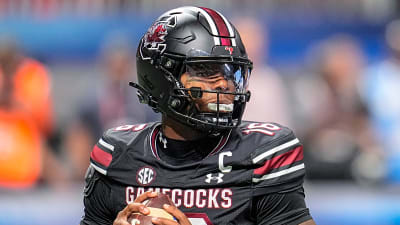Powder aims to feature only the best products and services. If you buy something via one of our links, we may earn a commission.
There’s a reason if you ski places with aggressive, big mountain terrain that you’ll see so many female skiers with a pair of Sheevas underfoot and Blizzard’s tell-tale glowing orange bases dangling from the lift. With freeride athletes like Caite Zeliff and Elyse Saugstad on the team, it’s not shocking Blizzard needed a hard-charging, women’s freeride ski in the lineup and the Sheeva 11 is just that. These days, the Sheeva 11 has gained somewhat of a cult following amongst hard-charging female skiers who want a powerful ski that can keep up with them.
The widest ski in the Sheeva lineup, the Sheeva 11 is designed as a powder ski that can tackle the biggest terrain and deepest conditions. However, true to so many other Blizzard skis, you’d be hard pressed to find a condition this ski doesn’t perform well in.
Like its wildly popular counterpart the Rustler, the Sheeva has remained unchanged from the previous two seasons, with the exception of an updated topsheet graphic for 2026. It’s worth noting that while the Sheeva 11 in a 168cm length and 174cm length are their own ski, in a 180cm length, the Sheeva adopts the same construction as a Rustler 11 and is only differentiated by the topsheet.
Blizzard Sheeva 11 Specs
- Size skied: 174cm
- Lengths available: 168cm, 174cm, 180cm
- Sidecut: 140mm - 112mm - 130mm
- Radius: 17.5m (174cm)
- Profile: Rocker/Camber/Rocker
-
Weight: 1825g
Shape, Flex, and Construction
The Sheeva 11s are constructed to be a true powder ski. Those who sit in the camp of “120mm underfoot or bust” for their powder skis might raise eyebrows at the Sheeva’s 112mm underfoot measurement, but rest assured, it’s a powder ski. A rockered 140mm-width tip shovels easily through deep snow while the 130mm width tail keeps the whole ski afloat. A deep but not wild sidecut keeps the turn radius fairly short and the ski nice and maneuverable in more technical terrain. That slightly narrower underfoot width and camber mean this ski is stable and edgeable on hardpack as well.
What stands out perhaps more than the shape of the Sheevas, though, are the uniquely engineered materials inside. Blizzard uses their Trueblend Free Woodcore to create a ski that has a finely-tuned flex from tip to tail as well as torsional stability through the ski. Rather than using one type of wood as the base core for the ski, Blizzard uses 10-20mm wide stringers of beech, poplar, and paulownia that are milled together. The stiffest woods are placed directly underneath the binding and work with the ski’s high cut to provide flex and stability when a turn is initiated. The length of these stringers are also adjusted to the specific ski length, so rather than just using the same construction for a 168cm ski and a 180cm ski, the tip-to-tail flex profile is tailored to the specific ski length.
Where the smaller-length Sheeva differs from the Rustler is in the W.S.D. FluxForm layers that make up the rest of the ski. The Rustlers have three pieces of Titanal laid out across the width of the ski in segments with a tiny offset gap between them to allow for torsional flexion throughout the ski. The Sheevas have these same Titanal plates on the sides of the skis, but in the center a piece of fiberglass laminate provides similar levels of stability and dampness to the ski while making it a bit more playful and softer-flexing. Despite the difference in construction, in a 174cm length, the Sheeva 11 and Rustler 11 are roughly the same weight. Also, as noted before, in the longer 180cm length, the Sheeva gets that third Titanal piece, like the Rustler.
The 2026 Sheeva 11s got a topsheet update along with the rest of the Rustler and Sheeva lineups. All the topsheets on the brand’s skis are printed (notably, by all women!) using a reduction or digital silkscreen process that takes 5-7 days to complete before being layered with TPU.
On Snow Performance
It’s possible that my experience of the Sheeva 11 would be different had I not been skiing a Rustler 11 for more than a year before I ever tried the Sheeva 11, so take it with a grain of salt.
At first, the Sheeva 11s felt familiar and comfortable with their identical Rustler shape. In low-tide, whiteout conditions at Kitzsteinhorn with the Blizzard team, they were still damp and confidence inspiring if I drove them and skied with purpose, even if I couldn’t see what was in front of me or underneath me. They were easily maneuverable in some of the more spicy, off-piste terrain we ventured into that presented a combination of icy moguls, hidden rocks, and dust-on-crust and required quick decision making on skis. Later in the season, I became more familiar with the Sheeva 11 at Banff Sunshine Village and found that they floated well in fresh, soft snow as predicted. They also held up against some refrozen chunks and weird, skied-off powder with a hint of sun crust, staying fairly stable even at higher speeds. Like the Rustlers, the Sheeva 11s were confidence-inspiring in landings, absorbed impact well, and didn’t really ever feel unpredictable.
For being a 112mm underfoot ski, the Sheeva 11s carve unbelievably well and want to go fast on groomers. I found that there was more chatter in the front of the ski than I like on groomers and they felt a little squirrelly carving at higher speeds. I didn’t find them particularly playful, but they were still plenty fun in bigger terrain and kept surprising me with how maneuverable they were on just about every type of snow skied.
Comparisons
Like I said, my experience with the Rustlers likely impacted my opinions of the Sheeva,as does my predisposition for liking really aggressive skis, so take it all with a grain of salt. Where I found the biggest difference, or rather, where I prefer the Rustler over the Sheeva, was carving at high speeds. The Sheeva didn’t feel as stable at high speeds on groomers and there was noticeably more chatter in the entire front of the ski, likely due to the difference in dampening between the titanal and fiberglass. In some of the more variable soft snow, there were spots where I didn’t feel like I could bust through chunks as confidently as I would on Rustlers.
In comparison to a similarly-wide powder ski like the Atomic Bent 110, the Sheeva is going to feel more stable, damp, charge-y, and more confidence inspiring at high speeds and questionable snow.
What Type of Skier is it Best For?
The Sheeva 11 is for female skiers who want an uncompromising, aggressive ski for the biggest terrain and deep days. All my Whistler/Jackson Hole/Alta girlies, I’m looking at you. The Sheeva 11 could very well be the daily driver of your dreams with how well it carves and does in hardpack AND the ski you take when you’re stepping up into gnarly terrain and deep snow and want something that will take care of you.
More must-reads:
- 49ers reportedly planning to make this Brock Purdy, Mac Jones call for Falcons game
- Yankees provide big injury updates on Aaron Judge, Carlos Rodon
- The '2024 TD catch leaders by team' quiz
Breaking News
Trending News
Customize Your Newsletter
 +
+
Get the latest news and rumors, customized to your favorite sports and teams. Emailed daily. Always free!








